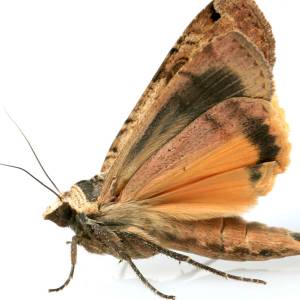 If you have a well-stocked pantry, you’ve likely seen a powdery moth known as an Indian meal moth fly out at some point or another. These moths are the most common pantry pest found in kitchens or closeted areas. They are small and physically harmless, with an average wingspan of ¾ inch at rest. Their wings are a combination of copper, pale, gray and tan, and they’re known for their zigzagging flight patterns.
If you have a well-stocked pantry, you’ve likely seen a powdery moth known as an Indian meal moth fly out at some point or another. These moths are the most common pantry pest found in kitchens or closeted areas. They are small and physically harmless, with an average wingspan of ¾ inch at rest. Their wings are a combination of copper, pale, gray and tan, and they’re known for their zigzagging flight patterns.
You will not commonly find these moths flying around during the day, as they are nocturnal and hide in daylight. They treat this time as a rest period, where they then lay their eggs. With a relatively long reproductive cycle, the Indian meal moth can take anywhere from 25-135 days for its egg development cycle to occur. A female moth can lay 100-400 eggs over a 1-18 day period. They prefer to do this in dried foods, fruits, candy, pet foods and powdered milk. The adults are not as much of a pest as the larvae, who spin a large web over the food that they infest. If you notice an excessive amount of webbing on foods, this is a telltale sign of an infestation. Most times, larvae can be found away from the affected foods because they will crawl away from the food sources to create their cocoons.
The ideal ways to rid a space of Indian meal moths include pheromone traps and a residual insecticidal spray. These are best handled by professionals, so be sure to contact Solidified Pest Control as soon as you notice their characteristic webbing over dry food products.
